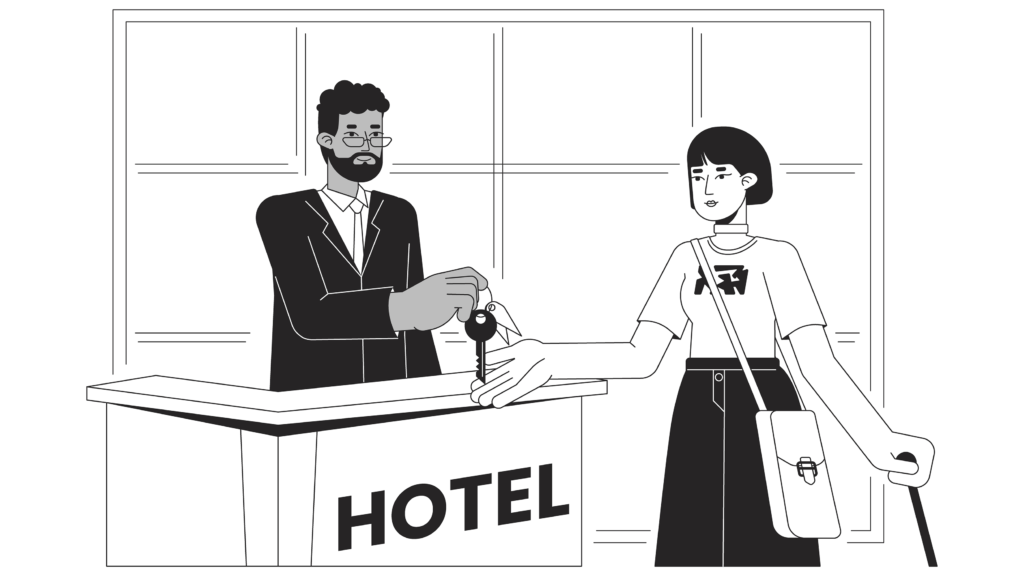Employee Experience: The Foundation of a Strong Customer Experience

#customerexperience #customersuccess #cxdesign
by Sebastiano Piras
Customer experience starts long before a customer interacts with a brand, it begins with the people behind the scenes. While organizations invest heavily in optimizing Customer Experience (CX), the link between employee satisfaction and customer outcomes often remains underexplored. Companies that prioritize Employee Experience (EX) not only see improved retention and engagement among their workforce but also benefit from higher customer satisfaction and loyalty.
Every customer journey is made up of a series of touchpoints, from the first interaction with a website or service desk to post-purchase support. Each of these touchpoints is shaped by the actions, attitude, and engagement of employees. Whether directly customer-facing or working behind the scenes, employees play a critical role in how brand experiences are delivered and perceived. When EX is strong, the customer journey becomes more seamless, consistent, and satisfying.
The 'EX to CX' Impact Chain
Employee Experience directly impacts customer interactions, influencing everything from service quality to brand perception. Research has consistently shown that companies with engaged employees outperform competitors in customer satisfaction and profitability. The Harvard Business Review reports that companies scoring high on EX metrics see a 1.8 times higher revenue per employee compared to those that neglect it.
When employees are empowered with the right tools, support, and workplace culture, they are more likely to deliver positive customer interactions. Conversely, disengaged employees can contribute to service inefficiencies, reduced customer trust, and increased churn rates.
Despite these clear benefits, many companies still focus on CX as an external strategy, failing to recognize that every customer touchpoint is influenced by the employees behind it.

This framework above highlights the direct correlation between employee engagement and business success. By investing in EX, organizations create a ripple effect that enhances customer interactions, strengthens loyalty, and ultimately drives revenue. Despite these clear advantages, many businesses struggle to measure and integrate EX into their overall CX strategies. Understanding how to effectively assess and improve employee experience is the next crucial step.
Assessing Employee Experience
To measure and improve Employee Experience (EX) effectively, organizations rely on a combination of qualitative and quantitative tools. According to Statista, surveys remain the most widely used method, with 57% of companies leveraging them to assess employee satisfaction and workplace engagement. One-on-one interviews follow closely, providing deeper qualitative insights into employee concerns and motivations, while exit interviews help identify systemic issues contributing to employee turnover.
Performance metrics, used by 42% of organizations, track productivity, engagement levels, and alignment with company goals. Meanwhile, attendance and turnover rates serve as indirect indicators of workplace culture and employee satisfaction, though only 33% of companies use them as an assessment tool. Additionally, some businesses incorporate focus groups (20%) to foster collaborative discussions and generate actionable feedback.
While surveys dominate as the primary tool, organizations are increasingly recognizing the importance of a more holistic approach. Unlike traditional annual surveys, companies are now adopting pulse surveys and AI-driven sentiment analysis tools to continuously monitor employee satisfaction in real-time, enabling more responsive and data-driven decision-making.
Your employees are your first customers. If you don’t treat them right, they won’t treat your customers right.
Shep Hyken X
Building on this idea, organizations need clear, actionable ways to assess and improve Employee Experience. Beyond traditional engagement surveys, companies are leveraging Employee Net Promoter Score (eNPS) to gauge workforce satisfaction, internal support resolution times to measure operational efficiency, and recognition program participation rates as indicators of workplace morale. Tracking attrition rates and internal mobility trends further helps leaders understand long-term employee engagement and career development opportunities.
By incorporating a mix of qualitative and quantitative measures, businesses can move beyond surface-level insights and actively shape an EX strategy that translates into stronger CX outcomes.
Managing Change in EX
Beyond assessing and optimizing EX, organizations must also manage inevitable changes that impact employees. Whether driven by digital transformation or shifts in organizational strategy, proactive change management is key to sustaining a positive work environment.
Changes in business operations, technology, or organizational structures inevitably affect employees. To prevent disruptions in EX and, by extension, CX, companies must take a proactive approach to change management, ensuring employees feel supported and engaged throughout transitions.
For instance, digital transformation initiatives, such as automating customer support through AI, can reduce workload but may also create job security concerns among employees. A structured approach to change management, such as the Behavioral Grid by BJ Fogg, helps organizations anticipate employee responses and tailor support strategies accordingly:
Green Dot: Encouraging new behaviors with minimal effort.
Black Path: Eliminating outdated behaviors that no longer serve the organization.
Span and Path Changes: Managing long-term behavior shifts in response to organizational evolution.
Proactively addressing employee concerns, providing upskilling opportunities, and maintaining transparent communication are essential for fostering a resilient workforce.
Leadership plays a crucial role in fostering a culture of adaptability. Clear communication, training programs, and transparent discussions about career development opportunities help employees feel secure and engaged throughout organizational transformations.
Integrating Employee Experience into CX
For organizations aiming to enhance CX, embedding EX within the broader customer strategy is non-negotiable. Key steps include:
Aligning HR and CX teams: Ensuring that human resources and customer experience leaders collaborate to create policies that benefit both employees and customers.
Investing in employee well-being: Companies that prioritize mental health, work-life balance, and professional development report higher employee retention and customer satisfaction rates.
Leveraging employee feedback for CX improvements: Frontline employees often have valuable insights into customer pain points and can serve as key contributors to CX optimization efforts.
Enhancing internal digital tools: Just as companies invest in customer-facing digital solutions, they must also provide employees with seamless digital experiences to enhance efficiency and engagement.
By aligning EX with CX strategy, companies shift from reactive problem-solving to building a proactive, people-centric culture that drives long-term results. Employees who feel valued and empowered are not only more productive, they also become authentic brand advocates. Their daily interactions shape the customer journey, influencing loyalty, satisfaction, and reputation at every touchpoint.
Case Study: Ritz-Carlton's EX Strategy
The Ritz-Carlton is synonymous with luxury hospitality, but what truly sets it apart is its commitment to employee empowerment as a way to enhance Customer Experience (CX). The company operates under the philosophy that happy, engaged employees lead to satisfied, loyal customers.
WHAT THEY DID
Ritz-Carlton implemented a $2,000 discretionary budget per employee, allowing staff to resolve guest issues without requiring managerial approval. This level of trust eliminates bureaucratic friction and enables employees to provide immediate, personalized solutions.

IMPACT ON CX
Customers benefit from instant, frictionless resolutions, reinforcing loyalty and brand advocacy.
The policy has led to numerous word-of-mouth success stories, strengthening the brand’s reputation for exceptional service.
Ritz-Carlton continues to rank among the top luxury hotels globally for customer satisfaction, as measured by J.D. Power and other hospitality benchmarks.
- Personalized, empowered service increases emotional connection with guests, turning one-time customers into long-term brand ambassadors.
IMPACT ON EX
Employees feel valued and empowered, knowing they have the authority to make decisions that directly impact the guest experience.
The initiative fosters higher engagement and job satisfaction, as staff take pride in their ability to exceed customer expectations.
The company maintains one of the lowest turnover rates in the hospitality industry, an industry known for high attrition.
- A culture of trust and autonomy enhances internal motivation, enabling employees to take ownership of their role in delivering exceptional service.

BUSINESS RESULTS
The Ritz-Carlton’s EX-first approach translates into measurable business impact, driving higher customer retention, increased revenue, and a globally recognized brand. Empowering employees not only enhances individual performance but also institutionalizes a service culture where excellence is expected and consistently delivered. The result: a customer experience that feels both effortless and exceptional, every time.